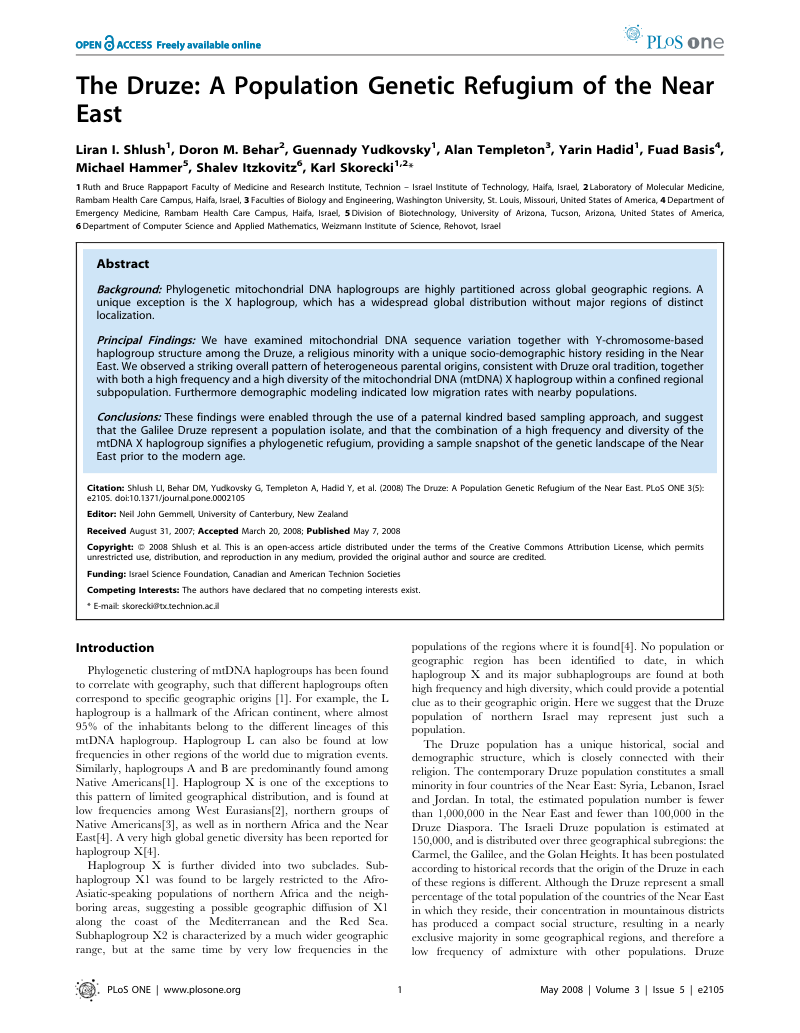Liran I. Shlush et al. review current genetic profile of the Druze people in the Middle East.
- Type
- Academic / Technical Report
- Source
- Liran I. Shlush Non-LDS
- Hearsay
- DirectSecondary
- Reference
Liran I. Shlush et al., "The Druze: A Population Genetic Refugium of the Near East," PLoS ONE 3, no. 5 (May 2008): 1–9
- Scribe/Publisher
- PLoS One
- People
- Alan Templeton, Doron M. Behar, Shalev Itzkovitz, Michael Hammer, Yarin Hadid, Guennady Yudkovsky, Karl Skorecki, Fuad Basis, Liran I. Shlush
- Audience
- Reading Public
- Transcription
Background
Phylogenetic mitochondrial DNA haplogroups are highly partitioned across global geographic regions. A unique exception is the X haplogroup, which has a widespread global distribution without major regions of distinct localization.
Principal Findings
We have examined mitochondrial DNA sequence variation together with Y-chromosome-based haplogroup structure among the Druze, a religious minority with a unique socio-demographic history residing in the Near East. We observed a striking overall pattern of heterogeneous parental origins, consistent with Druze oral tradition, together with both a high frequency and a high diversity of the mitochondrial DNA (mtDNA) X haplogroup within a confined regional subpopulation. Furthermore demographic modeling indicated low migration rates with nearby populations.
Conclusions
These findings were enabled through the use of a paternal kindred based sampling approach, and suggest that the Galilee Druze represent a population isolate, and that the combination of a high frequency and diversity of the mtDNA X haplogroup signifies a phylogenetic refugium, providing a sample snapshot of the genetic landscape of the Near East prior to the modern age.
- Citations in Mormonr Qnas
The B. H. Roberts Foundation is not owned by, operated by, or affiliated with the Church of Jesus Christ of Latter-day Saints.

